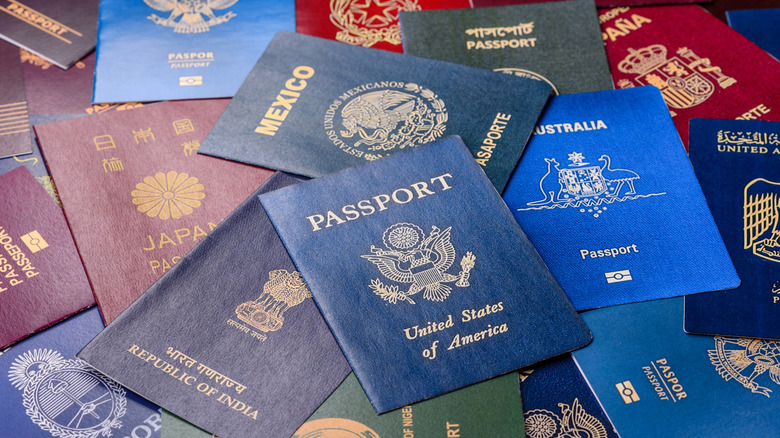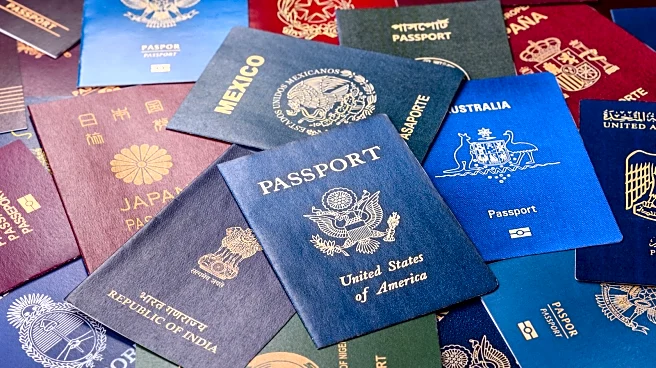
Although problems with your passport while traveling seem like they should be easy enough to avoid, mistakes with the documents cause families to miss flights all the time. Some parents have missed the expiration date of their child's passport (which needs to be renewed every five years, as opposed to 10). Others have even had their dog eat their passport, resulting in a scramble to the nearest office and last-minute flight changes. And if you're wondering whether you can fly with even just a small
tear in your passport, the answer likely rests with the customs agent at the border. Maybe some beer leaked onto the back pages after you pulled it out for an ID check at a rowdy bar — should you replace your passport then?
The U.S. Department of State (DOS) says that the only kind of acceptable "damage" to a passport that is permissible is "normal 'wear and tear,'" which it defines as "the bend of a passport after being carried in your back pocket" or "fanning of the visa pages after lots of opening and closing." Anything more severe requires that you apply for a new one. Their non-exhaustive list of damage that requires a passport replacement includes water damage, a significant tear, unofficial markings on the data page, missing visa pages, or a hole punch. Other possibilities include a loose or missing cover and a malfunctioning Radio Frequency Identification (RFID) chip.
It's important not to attempt any DIY fixes since any alteration invalidates the document legally. Instead, take steps to replace it as soon as any damage occurs. If you're traveling soon or are overseas when the damage occurs, you can expedite this service; here's how (plus, some ideas for how to avoid repeating the experience).
Read more: Rick Steves Says To Always Do These Things Before Traveling
Steps To Replace A Damaged Passport And Prevent Future Damage

As soon as you have identified any damage to your passport, you'll want to apply for a replacement straight away. Citizens of the U.S. must fill out Form DS-11 and submit it at a passport processing facility (usually your nearest post office, town hall, or public library), along with your damaged passport and a signed statement explaining what happened. You'll also need a new passport photo, appropriate government-issued identification, and cash or a check for the $130 renewal and $35 service fees (as of this publication). The process is almost identical to an ordinary passport renewal, except it must be done in person.
If you're traveling in six weeks or less, there's an option for an "expedited" service when you submit your documents for an additional fee of $60. Those traveling in less than three weeks must make an appointment to be seen in person at a certified passport agency. And if you're overseas when the damage occurs, you'll need to make your way to the nearest U.S. Embassy or Consulate and go through the same process you would if you were at home.
To prevent future damage, you may find it worthwhile to get a passport cover and store your documents in a plastic bag or other waterproof container to protect against the elements during your travels. Keep a photo of your passport's data page on your phone, or store a hard copy somewhere safe — this way, if you do damage your passport, you have proof of ID while waiting for your new booklet to arrive.
Ready to discover more hidden gems and expert travel tips? Subscribe to our free newsletter for access to the world's best-kept travel secrets.
Read the original article on Islands.











